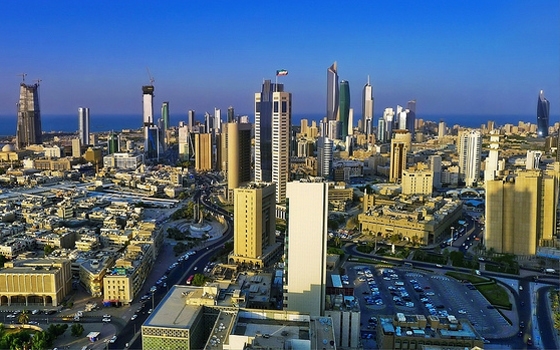The Kuwait government had awarded more than KD6 billion ($20.7 billion) worth of contracts by the end of August, almost twice as much as last year, making the country’s projects market among the fastest growing in the region, said a report.
With at least KD4.9-billion ($17 billion) in contracts still to be awarded before the year-end, the authorities are hoping that 2014 will prove to be a turning point for Kuwait’s projects market and a springboard for implementation of the country’s recently unveiled 2015-2020 development plan, stated the country's top lender National Bank of Kuwait (NBK), citing data from Meed Projects.
This year has so far witnessed increased activity in Kuwait’s projects market, the fourth largest in the GCC with a market value of $217 billion (KD 62 billion), it stated.
According to NBK, the country’s new five-year plan (now before parliament) – the tactical thrust of the state’s longer-term strategic Emiri vision for 2035 – aims to transform the country into a financial services and commercial hub for the northern Gulf.
In the broadest sense, the objective is sustainability, both fiscal and economic, which should see the country lessen its dependence on oil revenues by diversifying its income streams and broadening and deepening its economic base, it stated.
The investments in infrastructure and human capital as well as a raft of regulatory reforms are envisioned to improve the business environment, attract foreign investment and promote Kuwait’s industrial and services sectors, said the NBK in its report.
According to the plan, the authorities envisage average annual investment spending of KD11.8 billion ($40.7 billion) over the next five years. From this, KD6.3 billion ($21.7 billion) per annum has been earmarked for public investment in a range of strategically important projects, the report added.
These include, among others:
•The KD4-billion ($13.8 billion) new refinery and KD4.6-billion ($15.8 billion) clean fuels projects, through which the country’s refining capacity will expand and the quality of its refined products improve.
•The KD2.3-billion ($7.94 billion) Mubarak Al-Kabeer port on Boubyan Island, which aims to solve capacity constraints at the country’s existing ports and meet the projected growth in trade.
•The KD1.7-billion ($5.8 billion) international airport expansion project and the KD5.6-billion ($19.3 billion) metro project, both of which aim to relieve congestion and ensure that the country’s infrastructure is fit for the future.
Moreover, renewed emphasis has been placed on expanding and developing the country’s private sector, said the top Kuwaiti lender.
According to NBK, the government is targeting a real private sector growth of 9.4 per cent per year on average during the next five years, with the sector’s contribution to the economy rising to 34 per cent from 22 per cent (according to 2012 figures).
To that end, the authorities hope to secure the participation of private enterprises in a number of high profile projects which have been slated for implementation as public private partnerships (PPPs).
The key ones include the KD2.4-billion ($8.2 billion) Al Zour North Independent Water and Power Producer (IWPP) project, which will help meet rapidly rising water and electricity demand besides the KD4.6-billion ($15.8 billion) Khairan and Mutla city developments, which should help alleviate some of the current pressure on housing.
The new measures introduced by the government and the new five-year plan as well as the pick-up in momentum in project activity in 2014 can be interpreted as positive steps in Kuwait’s quest to realise its development objectives and growth potential, said the Kuwaiti bank in its report.
While supporting an improved economic outlook, these signs have also been picked up by international investors who are showing renewed interest in the Kuwaiti economy and its markets, it added.
ifpinfo
15 October






















































